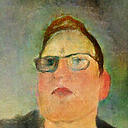Member-only story
Trump’s farce of fascism
Equal parts comedy and tragedy, the Jan. 6 riot was the perfect capstone of a presidency as ludicrous as it was horrific.
Karl Marx once wrote that all great people and events recur in history twice: “the first time as tragedy, the second time as farce.” He was talking about Louis-Napoleon, the mediocre nephew of Napoleon Bonaparte, but he could have just as easily been referring to our (soon-to-be-former) president. Throughout his four-year term, Trump was saddled with epithets like “Orange Hitler” and “Cheeto Mussolini.” Popular among Twitter liberals, these monikers capture the contradiction in how Trump’s opponents see him.
He is at once a monster and a clown. Trump is the “national nightmare” and “an existential threat to the Republic.” At the same time, he’s a punchline —easy fodder for hackneyed late-night monologues.
Somehow, he is both a fascist dictator bent on increasing his personal power yet too feckless to be bothered to perform even the most basic duties of the office much less design and oversee a totalitarian state.
These wildly conflicting images of Trump exist side by side, making it difficult for his critics to accurately evaluate him or respond appropriately. The actual way liberals treat Trump doesn’t match the seriousness…
